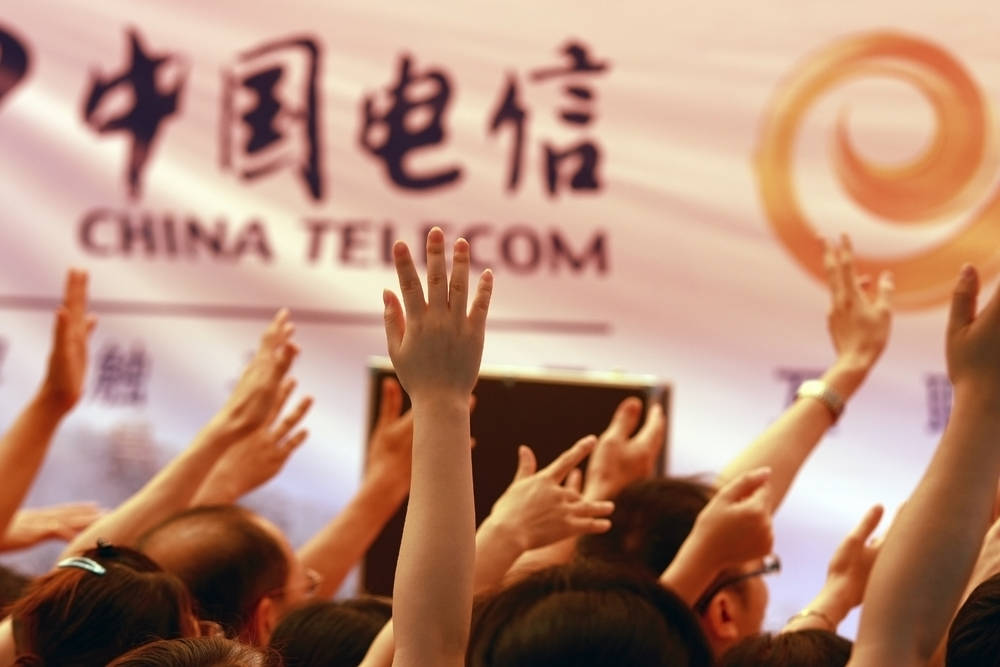China Trains 100-billion-parameter AI Model On Home Grown Infrastructure

China Telcom's AI Research Institute claims it trained a 100-billion-parameter model using only domestically produced computing power – a feat that suggests Middle Kingdom entities aren't colossally perturbed by sanctions that stifle exports of Western tech to the country.
The model is called TeleChat2-115B and, according to a GitHub update posted on September 20, was "trained entirely with domestic computing power and open sourced."
"The open source TeleChat2-115B model is trained using 10 trillion tokens of high-quality Chinese and English corpus," the project's GitHub page states.
The page also contains a hint about how China Telecom may have trained the model, in a mention of compatibility with the "Ascend Atlas 800T A2 training server" – a Huawei product listed as supporting the Kunpeng 920 7265 or Kunpeng 920 5250 processors, respectively running 64 cores at 3.0GHz and 48 cores at 2.6GHz.
Huawei builds those processors using the Arm 8.2 architecture and bills them as produced with a 7nm process.
- When it comes to cloud, it's China against the world
- Alibaba Yitian 710 rated fastest Arm server CPU in the cloud (for now)
- Chinese CPUs to feature in servers made by sanctioned Russian company
- Huawei hands its cloud Linux to China's only open source foundation
At 100 billion parameters, TeleChat2 trails the likes of recent Llama models that apparently top 400 billion parameters, or Open AI's o1 which has been guesstimated to have been trained with 200 billion parameters. While parameter count alone doesn't determine a model's power or utility, the low-ish parameter count suggests training TeleChat2 would likley have required less computing power than was needed for other projects.
Which may be why we can't find a mention of a GPU – although the Ascend training server has a very modest one to drive a display at 1920 × 1080 at 60Hz with 16 million colors.
It therefore looks like the infrastructure used to train this model was not at parity with the kind of rigs available outside China, suggesting that tech export sanctions aren't preventing the Middle Kingdom from pursuing its AI ambitions.
Or that it can deliver in other ways, such as China Telecom's enormous scale. The carrier has revenue of over $70 billion, drawn from its provision of over half a billion wired and wireless subscriptions. It's also one of the biggest users and promoters of OpenStack. Even without access to the latest and greatest AI hardware, China Telecom can muster plenty of power. ®
From Chip War To Cloud War: The Next Frontier In Global Tech Competition
The global chip war, characterized by intense competition among nations and corporations for supremacy in semiconductor ... Read more
The High Stakes Of Tech Regulation: Security Risks And Market Dynamics
The influence of tech giants in the global economy continues to grow, raising crucial questions about how to balance sec... Read more
The Tyranny Of Instagram Interiors: Why It's Time To Break Free From Algorithm-Driven Aesthetics
Instagram has become a dominant force in shaping interior design trends, offering a seemingly endless stream of inspirat... Read more
The Data Crunch In AI: Strategies For Sustainability
Exploring solutions to the imminent exhaustion of internet data for AI training.As the artificial intelligence (AI) indu... Read more
Google Abandons Four-Year Effort To Remove Cookies From Chrome Browser
After four years of dedicated effort, Google has decided to abandon its plan to remove third-party cookies from its Chro... Read more
LinkedIn Embraces AI And Gamification To Drive User Engagement And Revenue
In an effort to tackle slowing revenue growth and enhance user engagement, LinkedIn is turning to artificial intelligenc... Read more

